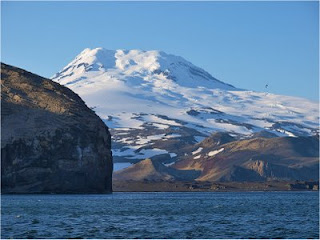Sub Zero temperatures in the Arctic Circle.
Olivine stone has been known to weather rather quickly compared to other types of rock. But when it begins, the stone gradually turns a redish-brown color.
This is an image of an Olivine stone after it has begun weathering.
The second type of stone weathering is with the talc veins. Normally highly resistant towards natural weathering, but is the softest of all minerals.The only time when it is very prone to weathering is when criss-crossed by micro cracks that are penetrated by water. Once this happens, frost damage is seen. If frost damage does not happen, it may have carried salts which can form crystallization.
An image of Talc veins with weathering.
Did you know???
Olivine stone is very popular in being made into jewelry. Normally they are cut to fit into bracelets, and range from $20-$400!
Sources: http://www.buzzle.com/articles/salt-crystallization.html





